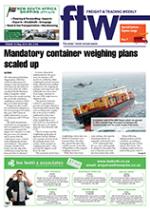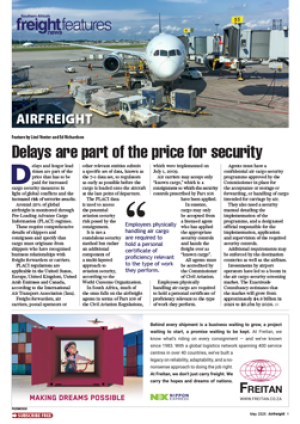The Federation of East and
Southern African Road
Transport Associations
(Fesarta) is working with
stakeholders in the Southern
African Development
Community (SADC) to
develop a model for the
sustainability of truck stops.
Chief executive of Fesarta,
Barney Curtis, told FTW
that while there had been
press reports about truck
stops along strategic SADC
trade routes, “it is one thing
to identify potential trucks
stops, but another to find
someone to put up the
financing and keep them
sustainable”.
Walter Hanke, road freight
manager for Transworld
Cargo, told FTW that truck
stops were “a must-have”
facility on all major trade
corridors, particularly with
the increasing number of
vehicles on the road and the
subsequent congestion and
delays.
Responding to the FTW
article (TKC to get a truck
stop makeover, 16 May 2014)
about the proposed move by
the Trans-Kalahari Corridor
Management Committee to
establish four new truck stops,
Curtis said that it was crucial
for the movement of goods to
and from southern African
countries. “Unfortunately it
still has obstacles such as the
extra border and the time and
cost incurred to get through
it,” he said, adding that it is
sometimes more efficient to
use the Upington route.
Since most of the trade
is to and from ports in
South Africa, travelling via
Botswana is a “necessary evil”
says Curtis, noting that the
Botswana permit is expensive
and that the animals along the
corridor can be a road hazard.
However, some challenges
have been addressed he
conceded. “The hours of
operation at the border have
been extended, which means
a truck can go right through
Botswana on the same day.
In addition, the new border
at Skilpadshek will speed up
transit,” he said.
INSERT & CAPTION
It is one thing to
identify potential
trucks stops, but
another to keep them
sustainable.
– Barney Curtis
CAPTION
Despite its name, the new Skilpadshek border post
between South Africa and Botswana is expected to
speed up transit times.

